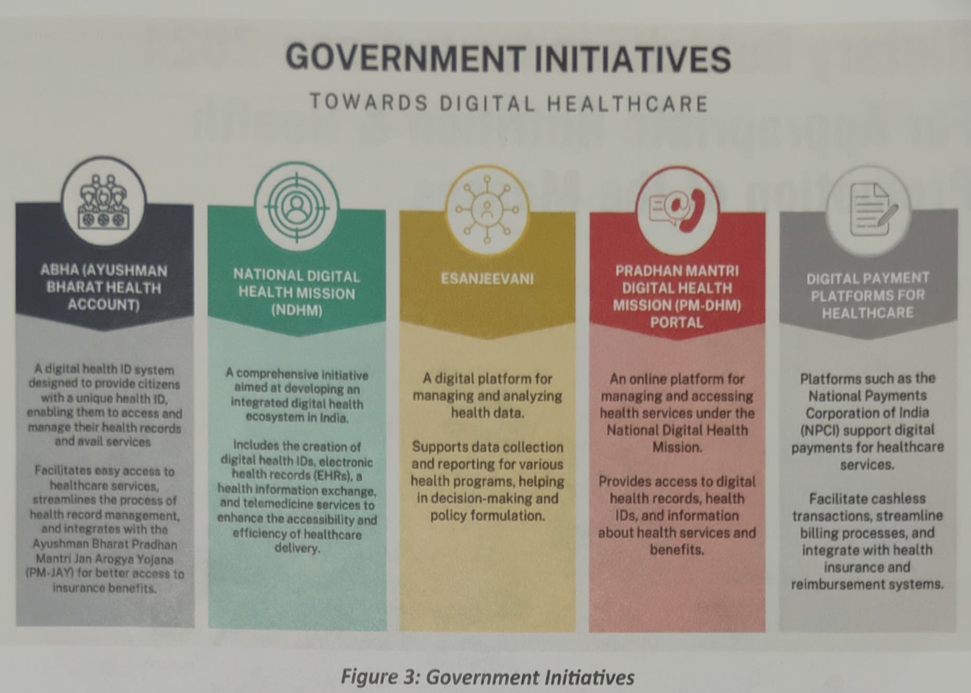Kurukshetra Summary: October 2024 – Health And Nutrition
1. Role Of Traditional And Indigenous Knowledge In Combating Malnutrition In India
- 1. Role Of Traditional And Indigenous Knowledge In Combating Malnutrition In India
- 2. Future Reforms For India’s Health System
- 3. The Digital Shift In Healthcare: Navigating Technological Transformation
- 4. Role Of Agriculture In Promoting Health And Nutrition
- 5. Health Management In Rural India: Role Of Healthcare Startups
- 6. A Decade of Swachh Bharat Mission: Health Outcomes Through Waste Management Reforms
Introduction:
- Traditional and indigenous knowledge offers sustainable, nutrient-rich solutions to combat malnutrition in rural India.
- This knowledge, passed through generations, promotes locally sourced foods and resilient agricultural practices.
- Despite its benefits, widespread adoption of traditional knowledge faces several challenges, requiring targeted efforts and policy support.
The Role of Traditional and Indigenous Knowledge:
- Indigenous food systems provide nutrient-rich, locally sourced foods crucial for rural food security.
- Traditional farming methods promote biodiversity, support soil health, and avoid chemical inputs.
- These food systems are culturally ingrained, making them accessible and sustainable for rural populations.
Challenges in Reviving Traditional Knowledge:
- Erosion of Knowledge: Urban migration and exposure to Western diets have contributed to a decline in traditional food practices.
- Stigma Around Traditional Foods: Packaged and processed foods are often preferred, even though they are less nutritious.
- Market Access: Indigenous crops face limited market opportunities, hindering widespread adoption.
- Impact of Climate Change: Traditional crops are vulnerable to environmental degradation, further complicating food security efforts.
Government Schemes Supporting Traditional Food Systems:
| Government Initiative | Objective | State-Specific Example | Focus on Traditional Foods/Nutrition |
| POSHAN Abhiyaan (National Nutrition Mission) | Improve nutritional outcomes for children, pregnant women, and lactating mothers. | Madhya Pradesh: Anganwadi centers promote traditional foods like jowar and bajra in children’s meals. | Promotes local grains and traditional foods in daily diets for vulnerable groups. |
| Van Dhan Yojana | Livelihood opportunities through value addition of forest produce by tribal communities. | Jharkhand: Tribals process wild fruits and leaves, making nutrient-rich products like mahua, tamarind, and moringa powders. | Boosts traditional knowledge of forest resources and enhances food security. |
| Pradhan Mantri Matru Vandana Yojana (PMMVY) | Financial support to pregnant women and lactating mothers for their first live birth. | Rajasthan: Local campaigns encourage the inclusion of indigenous grains like millets and pulses in maternal diets. | Enhances nutritional support for pregnant women through traditional foods. |
| Rashtriya Krishi Vikas Yojana (RKVY) | Supports holistic development of agriculture and allied sectors, including traditional crops. | Odisha: Farmers are incentivized to grow traditional rice and millet varieties. | Financial support for growing indigenous crops, increasing availability in rural diets. |
| MGNREGA | Provides employment while promoting sustainable agriculture. | Uttarakhand: MGNREGA workers employed to create irrigation facilities for millet farming. | Preserves traditional agriculture by improving infrastructure for millet cultivation. |
| Integrated Child Development Services (Saksham Anganwadi) | Provides supplementary nutrition to children under 6, pregnant women, and lactating mothers. | Gujarat: ICDS centers incorporate local traditional recipes like khichdi made from millets and pulses. | Promotes consumption of traditional, nutrient-rich foods in supplementary nutrition programs. |
| National Food Security Mission (NFSM) | Ensures food security by increasing production of pulses, millets, and other nutritious crops. | Karnataka: Promotes cultivation of indigenous pulses and finger millets (ragi). | Revitalizes production and consumption of traditional crops to improve dietary diversity. |
| Mid-Day Meal Scheme (PM Poshan Shakti Nirman) | Provides nutritious meals to school children. | Tamil Nadu: Local schools serve millet-based meals in mid-day programs. | Integrates traditional foods into school nutrition programs to enhance dietary quality for children. |
| National Medicinal Plants Board (NMPB) | Promotes cultivation of medicinal plants for health and nutrition. | Chhattisgarh: Uses traditional medicinal plants like amla and giloy in community nutrition programs. | Encourages use of traditional medicinal plants for nutritional and therapeutic purposes. |
| Tribal Sub-Plan (TSP) | Provides attention to tribal communities, supporting traditional food practices and livelihoods. | Andhra Pradesh: Supports cultivation of traditional tuber crops like yam and cassava, crucial for tribal diets. | Strengthens traditional food systems by supporting cultivation of indigenous crops in tribal areas. |
| Eat Right India Campaign | Promotes healthy, sustainable diets by encouraging local, seasonal, and traditional foods. | Kerala: Local campaigns promote consumption of jackfruit and banana-based dishes. | Raises awareness about the importance of traditional foods for a balanced, nutritious diet. |
| Pradhan Mantri Krishi Sinchayee Yojana (PMK5Y) | Focuses on improving irrigation to support sustainable agriculture, including traditional crops. | Maharashtra: Supports cultivation of traditional rain-fed crops like sorghum through better irrigation facilities. | Enhances viability of traditional agriculture and ensures cultivation of nutrient-dense crops. |
| Millet Mission | Promotes cultivation and consumption of millets to enhance food security and combat malnutrition. | Chhattisgarh: Promotes traditional millets like kodo and kutki, integrated into public distribution systems. | Focuses on millet cultivation and consumption, with the adoption of the Shree Anna Abhiyan model. |
Empowering Women in Traditional Food Systems:
- Women in rural areas hold valuable knowledge about traditional food preparation, essential for promoting nutrition in households.
- Empowering women to share and pass down these practices strengthens community health, particularly in maternal and child nutrition.
- Community-led initiatives driven by women can effectively revive traditional food practices and contribute to nutrition awareness campaigns.
Solutions to Address Challenges:
- Educational Initiatives: Raising awareness about the nutritional benefits of indigenous foods through public campaigns.
- Market Interventions: Enhancing market access for traditional crops through government support and branding efforts.
- Cultural Rebranding: Rebranding traditional foods to make them more appealing to younger generations.
- Preservation of Knowledge: Documenting and preserving traditional knowledge related to food production and preparation.
- Integration with Modern Agriculture: Blending traditional practices with modern technologies to enhance sustainability and accessibility.
Conclusion:
- By overcoming challenges through educational programs, market interventions, and government policies, rural communities can achieve food security.
- Empowering women and promoting climate-resilient crops are vital for creating sustainable, culturally relevant food systems that benefit nutrition and biodiversity.
2. Future Reforms For India’s Health System
Introduction
- India faces a complex challenge in addressing healthcare, water, and sanitation issues, which are critical for public health.
- Despite numerous government efforts, healthcare shortages and infrastructure gaps persist, particularly in rural areas.
Government Schemes and Initiatives to Improve Healthcare
- Ayushman Bharat Pradhan Mantri Jan Arogya Yojana (AB-PMJAY): Provides free healthcare to over 50 crore beneficiaries, offering financial relief to vulnerable populations.
- National Health Mission (NHM): Focuses on improving maternal and child health, controlling communicable diseases, and providing essential healthcare services.
- Ayushman Bharat-National Rural Health Mission (AB-NRHM): Enhances healthcare access in rural areas through affordable services.
Water and Sanitation Initiatives for Public Health
- Jal Jeevan Mission (JJM): Aims to provide piped water to all rural households by 2024, ensuring access to clean drinking water.
- Swachh Bharat Mission (SBM): Successfully declared India open defecation-free by 2019, with efforts to improve sanitation infrastructure in households.
Key Challenges in Healthcare and Sanitation
- Healthcare Personnel Shortage: India has 17 doctors and 40 nurses per 10,000 people, with critical gaps in rural areas.
- Infrastructure Gaps: Many healthcare centres, especially in rural regions, lack adequate facilities and resources to provide essential services.
- Water Scarcity and Hygiene: Addressing water scarcity and promoting hygiene are crucial for preventing waterborne diseases and ensuring good health.
- Impact of Climate Change: Climate change has worsened water shortages, affecting both availability and quality of resources in vulnerable areas.
Solutions and Recommendations
- Public-Private Partnerships: Collaborating with the private sector can enhance healthcare infrastructure and provide training to medical professionals.
- Leveraging Technology: Telemedicine can improve healthcare access, particularly in remote regions.
- Community Involvement: Encouraging community participation in water and sanitation projects can lead to sustainable solutions.
Conclusion
- India’s healthcare system requires urgent reforms, including increased funding, better working conditions, and more healthcare professionals.
3. The Digital Shift In Healthcare: Navigating Technological Transformation
Introduction
- The healthcare industry is undergoing a profound transformation fueled by technological advancements such as Artificial Intelligence (AI), Big Data, and the Internet of Things (IoT).
- These innovations are reshaping the traditional healthcare model, leading to improved outcomes for patients globally by enhancing healthcare design, delivery, and management.
Key Technological Drivers
- Artificial Intelligence (AI): AI is playing a crucial role in analysing large medical datasets, detecting patterns, and assisting healthcare professionals in diagnosis and treatment planning.
- Big Data: The collection and analysis of vast datasets are enabling healthcare providers to understand disease trends, patient health, and treatment outcomes more effectively.
- Internet of Things (IoT): IoT devices like wearable health trackers and medical sensors provide real-time health data, improving patient monitoring and personalised care delivery.
Role of Government Schemes and Initiatives

Challenges in Digital Healthcare Adoption
- Data Privacy and Security: Ensuring the privacy of patient data is a top concern. Strong security protocols are necessary to prevent data breaches and unauthorised access.
- Interoperability Issues: Seamless exchange of data across different healthcare systems is essential for effective care coordination, yet remains a significant challenge.
- Digital Divide: Unequal access to technology poses a challenge, as underserved and remote populations might be left behind in the digital healthcare revolution.
Opportunities and Benefits of Digital Transformation
- Improving Accessibility and Affordability: Digital healthcare, through telemedicine and digital health records, can provide remote populations with better access to affordable healthcare.
- Enhancing Patient Engagement: Patients can become active participants in their care through the integration of digital tools that enable informed decision-making and proactive health management.
Conclusion
- The transformation of the healthcare sector, driven by AI, Big Data, and IoT, presents both significant opportunities and challenges.
4. Role Of Agriculture In Promoting Health And Nutrition
Introduction
- Agriculture plays a fundamental role in promoting health and nutrition, offering potential solutions to malnutrition and non-communicable diseases (NCDs).
- Addressing global challenges such as soil degradation, climate change, and poverty is essential for leveraging agriculture as a tool for better health outcomes.
The Importance of Nutrient-Dense Foods
- Nutrient-rich agriculture: Produces essential foods like fruits, vegetables, whole grains, legumes, and nuts that support balanced diets.
- These foods are rich in vitamins, minerals, fibre, and antioxidants, contributing to overall well-being and reducing the risk of chronic diseases.
Enhancing Dietary Diversity
- Dietary diversity is crucial for meeting the population’s nutritional needs, reducing nutrient deficiencies, and preventing malnutrition.
- Agriculture’s role in growing diverse crops helps ensure a variety of food options that promote better health.
- Mission for Integrated Development of Horticulture (MIDH) encourages the cultivation of a wide range of fruits and vegetables, which are essential for a balanced diet.
Sustainable Agricultural Practices for Health
- Sustainable agriculture, such as agroforestry, mixed cropping, and zero-budget natural farming, promotes soil health, biodiversity, and resilience of agricultural systems.
- These practices reduce pesticide use, improve long-term productivity, and contribute to the overall health and well-being of the community.
- Organic farming is also being promoted for its environmental benefits and potential to produce healthier food.
Addressing Environmental and Climatic Challenges
- Climate change, rising temperatures, and erratic weather patterns significantly impact agricultural productivity.
- According to the Food and Agriculture Organization (FAO), 32% of the world’s soils are degraded, which threatens food security and nutrition.
- Government schemes like Paramparagat Krishi Vikas Yojana (PKVY) support organic farming and eco-friendly practices.
Agriculture’s Role in Tackling Non-Communicable Diseases
- The global burden of NCDs, which account for 71% of worldwide deaths, can be alleviated by promoting healthy, nutrient-dense foods through agriculture.
- POSHAN Abhiyan (National Nutrition Mission) addresses malnutrition by promoting the production and consumption of nutrient-dense foods.
- However, calorie-rich but nutrient-poor food distribution under some schemes remains a challenge, necessitating holistic solutions.
Revitalising Traditional Foods and Crops
- Traditional crops, such as millets, are gaining popularity for their health benefits, including a low glycemic index and high fibre content.
- The Indian government is promoting the cultivation of millets and other biofortified crops to address nutritional deficiencies and support sustainable agriculture.
Conclusion
- Agriculture is not only the backbone of food production but also a key tool for improving public health and nutrition.
- A coordinated effort between farmers, policymakers, and consumers is essential to building a healthier, more resilient future.
5. Health Management In Rural India: Role Of Healthcare Startups
Introduction
- Healthtech startups are pivotal in bridging the urban-rural healthcare divide by leveraging innovative solutions.
- Their focus on affordability and technology addresses critical healthcare challenges faced by rural populations.
Innovations Transforming Rural Healthcare
- Telemedicine Solutions: Startups offer online consultations and remote monitoring, enabling rural patients to connect with specialists easily.
- Smart Ambulances: Equipped with advanced technologies, these ambulances ensure timely medical care and efficient transport to healthcare facilities.
- Digital Prescriptions: Online prescription services streamline the medication acquisition process, minimising the need for in-person visits.
- Disease Prevention Tools: Startups are developing platforms for early detection of diseases and health education initiatives to promote wellness.
- Drone Delivery Systems: Drones are utilised to deliver essential medical supplies and vaccines to hard-to-reach areas, particularly during emergencies.
- Mobile Health Applications: Apps like Pocket Doctor and Home Doctor provide personalised health advice and connect patients with healthcare professionals.
- Advancements in Medical Technology: Portable diagnostic devices and wearable health trackers improve healthcare outcomes by enabling regular monitoring of health conditions.
Success Stories of Healthtech Startups
| Startup | Founded | Services Offered | Subscription Fee | Key Achievements | Government Initiative Alignment |
| Digi Qure | 2020 | Telemedicine consultations, lab tests, referrals | ₹2 per month | Reached many rural residents; supports traditional healthcare alternatives | National Digital Health Mission |
| Cure Bay | 2021 | Establishes e-clinics in remote villages | Not specified | Empaneled over 500 medical professionals; accessible within a 10 km radius |
Conclusion
- Healthtech startups are vital in reshaping healthcare delivery in rural India, making it more accessible, affordable, and efficient.
6. A Decade of Swachh Bharat Mission: Health Outcomes Through Waste Management Reforms
Introduction
- The Swachh Bharat Mission (SBM) was launched in 2014 to address inadequate waste management in India, aiming for a clean and hygienic nation.
- India generates approximately 55 million tonnes of municipal solid waste (MSW) annually, with projections of 165 million tonnes by 2030 and 436 million tonnes by 2050.
Key Initiatives of Swachh Bharat Mission
- Behavioural Change Campaigns: Promoting hygienic practices among citizens through initiatives like Swabhav Swachhata-Sanskaar Swachhata.
- Data Management Solutions: Utilising information technology to enhance data collection and decision-making in waste management.
- Public Awareness Campaigns: Educating citizens on waste segregation, recycling, and proper disposal to foster responsible waste management.
- Community Engagement: Involving local communities in waste management to instil a sense of ownership and responsibility for cleanliness.
Economic Potential of Waste Management
- The circular economy principles highlight significant revenue opportunities:
- INR 11,836 crores from recycling dry waste.
- INR 365 crores from composting organic waste.
- INR 1,679 crores from producing Bio-CNG from wet waste.
Challenges in Waste Management
Urban Challenges
- High Population Density: Increased waste generation in cities makes management challenging.
- Inadequate Infrastructure: Insufficient waste collection and processing facilities contribute to poor waste management.
- Informal Sector Involvement: Reliance on the informal sector leads to unsanitary practices and environmental hazards.
- Lack of Formal Regulations: Inconsistent regulations hinder effective waste management in urban areas.
- Limited Public Engagement: Lack of awareness and participation among citizens affects the success of waste management initiatives.
Rural Challenges
- Geographic Dispersion: Scattered rural settlements complicate efficient waste collection and disposal.
- Lack of Infrastructure: Rural areas often lack essential facilities for waste management activities.
- Limited Budget: Financial constraints restrict rural communities from investing in waste management solutions.
- Informal Practices: Common practices like open dumping and burning worsen environmental pollution.
- Community Engagement: Cultural and social factors make it difficult to involve rural populations in waste management efforts.
Case Studies of Successful Initiatives
| Case Study | Waste-to-Charcoal Plant, Varanasi, UP | Waste-to-Energy Plant, Pimpri Chinchwad, MH |
| Capacity | Processes 700 tonnes of waste daily | Processes over 100 metric tonnes of plastic waste daily |
| Process | Converts municipal solid waste into biochar (charcoal) | Converts plastic waste into fuel |
| Energy Generation | Generates 11.5 MW of energy | Generates fuel from plastic waste |
| Benefits | – Reduces waste volume headed to landfills | – Reduces plastic waste |
| – Sequesters carbon | – Generates fuel | |
| – Contributes to climate change mitigation | ||
| – Reduces urban air pollution by minimising waste burning and landfilling |
Conclusion
- The Swachh Bharat Mission represents a crucial step toward improving public health and sanitation in India through effective waste management reforms.




